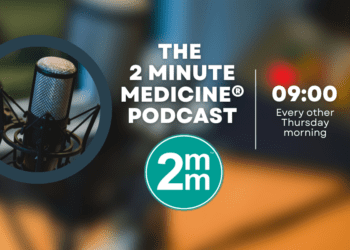Long-acting opioid use linked to higher risk of overdose
1. In a cohort of elderly veterans with chronic painful conditions, patients started on long-acting opioids were 2.5 times as likely to have an unintentional overdose as compared to short-acting opioids.
2. The risk of overdose from long-acting opioids was highest in the first 2 weeks after treatment initiation.
Evidence Rating Level: 2 (Good)
Study Rundown: With increased use of opioids for chronic pain management comes a higher risk of opioid overdose. However, few studies have examined the factors other than opioid dose that contribute to overdose risk. The objective of this study was to determine if unintentional opioid overdose was associated with the duration of opioid action. Individuals started on long-acting opioids were 2.5 times as likely to have overdose incidents as compared to patients on short-acting opioids. This risk was five times higher in the first two weeks after treatment initiation.
Strengths of this study include being a large, population-based, propensity score-adjusted cohort study. Limitations of this study include not being able to adjust for data that is not included in the health administrative database. The population was largely elderly male veterans, so the results may not be generalizable to a broader population. Additionally, automated prescription data was used, rather than actual adherence data. Moreover, a significant proportion of patients were excluded, as the population began with over 2 million patients, and ultimately 840,606 patients were included in the analysis.
Click to read the study in JAMA Internal Medicine
Relevant Reading: Opioid dose and drug-related mortality in patients with non-malignant pain
In-Depth [retrospective cohort]: This population-based, propensity-score adjusted study used the Veterans Administration Healthcare System (VA) database to examine national pharmacy and healthcare data of 840,606 veterans with chronic painful conditions, from January 2000 to December 2009. The administrative data contained information on opioid dosage, duration of action, and events of hospitalizations for unintentional opioid overdoses. Baseline demographic and clinical information were also collected from the VA. Study participants were propensity-score matched to controls, and multivariate regression models were performed. Hazard ratios were adjusted for age, sex and opioid dose.
A total of 319 unintentional overdose events were observed within the study period. After adjustment for age, sex, and opioid dose, the hazard ratio of overdose events was 2.56 (95%CI 1.67-3.93) for individuals on long-acting opioids as compared to those on short-acting opioids. Adjustment with the remaining covariates reduced the risk slightly, but it remained significant (HR 2.33; 95%CI 1.26-4.32). The overdose risk was greatest in the first two weeks after treatment initiation (HR 5.25, 95%CI 1.88-14.72). The results remained robust through sensitivity analyses.
Image: PD
©2015 2 Minute Medicine, Inc. All rights reserved. No works may be reproduced without expressed written consent from 2 Minute Medicine, Inc. Inquire about licensing here. No article should be construed as medical advice and is not intended as such by the authors or by 2 Minute Medicine, Inc.







